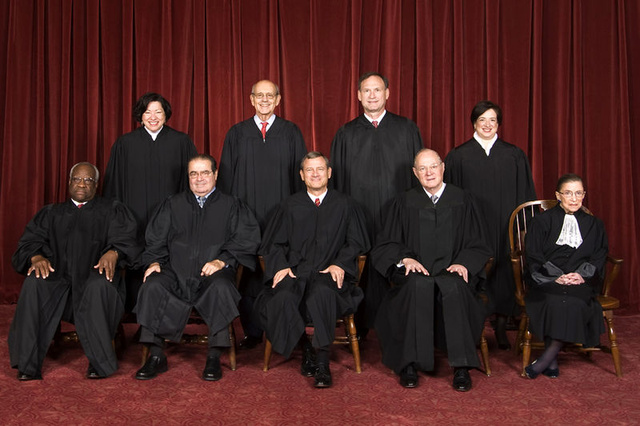Faith and the high-court duos ... (ssshhh)
 Right up front, let me confess that I really had my hopes up when I started reading the Washington Post story that ran under the following headline: "Justices who will shape Supreme Court’s future are matching pairs." The matching pairs, of course, are the most recent ideological duos to read the high court. The story sets this up quite nicely:
Right up front, let me confess that I really had my hopes up when I started reading the Washington Post story that ran under the following headline: "Justices who will shape Supreme Court’s future are matching pairs." The matching pairs, of course, are the most recent ideological duos to read the high court. The story sets this up quite nicely:
The Supreme Court term that ended Monday lacked the blockbuster decisions of years past, but it appeared to make one thing clear: George W. Bush and Barack Obama got what they hoped for when they nominated the justices who will shape the court’s future.
It can be treacherous to predict a justice’s path based on early service, and presidents have been disappointed by the positions their nominees take when they reach the bench. But this year, the four youngest justices separated neatly into the court’s ideological wings and then presented a unified front.
Obama’s choices, Justices Sonia Sotomayor and Elena Kagan, agreed 94 percent of the time this term, according to statisticians at SCOTUSblog.com. The only pair that agreed more were Chief Justice John G. Roberts Jr. and Justice Samuel A. Alito Jr., Bush’s picks, who parted ways in only 4 percent of the court’s decisions.
Roberts joined the court in 2005, Alito the next year, Sotomayor in 2009 and Kagan last August -- and this term presented opportunities in which the four divided into debate partners.
So the big idea of the story is to look at the intellectual frameworks that have created the legal perspectives of these four judges.
That's fair game for serious news coverage. Do doubt about it.
Thus, I was hopeful that the story would at some point discuss, well, you know, some of the crucial characteristics that united and divide some of these judges. There are, of course, three more Catholics in these duos and another person of Jewish heritage. Still, their religious traditions seem to have played radically different roles in their lives and intellectual development -- especially on subjects related to free speech, religious liberty, etc., etc.
This is particularly true with the three new Catholic members of the court. Is it possible to even discuss the Supreme Court these days without discussing divisions inside American Catholicism?
My hopes for this story rose even higher when the Post team had to mention the inevitable:
... (Some) things don’t change. Justice Anthony M. Kennedy remains the most influential member of the court when ideological divides prevail. In the 16 cases decided by a vote of 5 to 4, he was in the majority in all but two.
In the handful of cases in which liberals prevailed -- including a ruling that California must reduce the number of prison inmates or that children must be treated differently when given Miranda warnings -- it was because Kennedy sided with them. Twice as often, the Ronald Reagan appointee voted with the court’s consistent conservatives.
Well, there is another crucial voice in the Catholic wing of the court -- the voice that often is the defining voice. Oh, and just a few months down the legal road there are hot cases looming that will offer more insights into this alleged Catholic voting majority on the court that rules America. What kinds of issues?
Waiting in the wings are Arizona’s immigration law, same-sex marriage, affirmative action in higher education and, depending on how quickly lower courts move, the Affordable Care Act.
Oh my. This is why I have this religion bee in my journalistic headgear, especially as it concerns the Catholic wing of the court. If you wish, click here for a refresher course on that subject. Then again, you could also click here because some of these religious questions about this court have been spotted -- for better and for worse -- by reporters in the past.
Why bring this up? Go back and consider the actual subject of the story. We have two pairs of new justices. They are very different in their legal approaches. What makes them so different? Perhaps, just perhaps, the roots of some of their differences can be found in their relationships to the religious traditions that, to one degree or another, helped form them.
In other words, is this news subject totally secular? If so, I think that says more about the journalists than the justices.